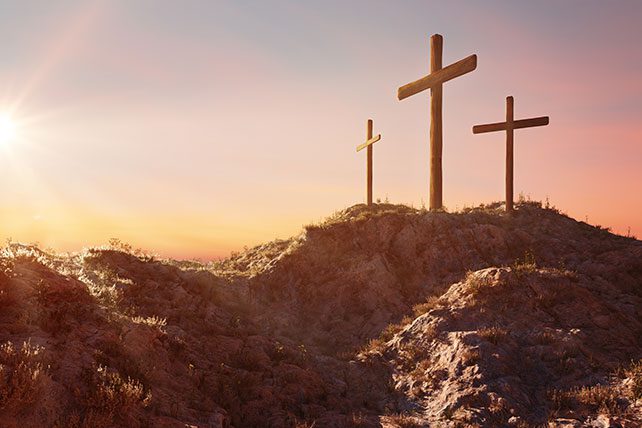Where was Jesus crucified? The crucifixion of Jesus Christ at Golgotha, also known as Calvary, holds profound significance in Christian theology and history. This sacred site, located outside the walls of Jerusalem, serves as a focal point of faith and reflection for millions of believers worldwide.
Let’s explore the details surrounding Golgotha and address some frequently asked questions about this pivotal event.
1. Where is Golgotha Located?
Golgotha, meaning “place of the skull” in Aramaic, is traditionally believed to be situated just outside the walls of Jerusalem. While the exact location may be debated among scholars, the significance of Golgotha as the site of Jesus’ crucifixion remains undisputed in Christian tradition.
2. What Does Golgotha Symbolize?
Golgotha holds deep symbolic significance in Christianity, representing the sacrificial death of Jesus Christ for the redemption of humanity’s sins.
As the location of Jesus’ crucifixion, Golgotha serves as a powerful reminder of God’s love and mercy, as well as the ultimate victory over sin and death achieved through Christ’s resurrection.
3. How Was Jesus Crucified at Golgotha?
According to biblical accounts, Jesus was led to Golgotha after being condemned to death by crucifixion. He carried his cross to the site, where Roman soldiers nailed him to the wooden beams and erected the cross.
Jesus endured hours of agony before ultimately surrendering his life for the salvation of humanity.
RELATED: The Unimaginable Suffering of Jesus
4. Why is Golgotha Revered by Christians?
For Christians, Golgotha is revered as the sacred ground where Jesus willingly laid down his life for the forgiveness of sins. It is a place of pilgrimage and prayer, where believers reflect on the profound sacrifice of Christ and the hope of salvation offered through his death and resurrection.
5. What Evidence Exists for Golgotha’s Authenticity?
While archaeological evidence may be limited, historical accounts and Christian tradition affirm Golgotha as the authentic site of Jesus’ crucifixion. Early Christian writings and pilgrim testimonies from the first centuries AD provide compelling support for the location of Golgotha outside Jerusalem’s walls.
6. How Can Believers Connect with Golgotha Today? Despite the passage of time, believers can connect with the significance of Golgotha through prayer, reflection, and worship. Many Christian denominations observe Good Friday services, commemorating Jesus’ crucifixion and meditating on the profound implications of his sacrifice at Golgotha.
Golgotha stands as a sacred symbol of Christ’s sacrificial love and redemption, inviting believers to encounter the transformative power of the cross. As Christians reflect on the significance of Golgotha, they are drawn into a deeper understanding of God’s unfailing grace and the promise of eternal life through Jesus Christ.

